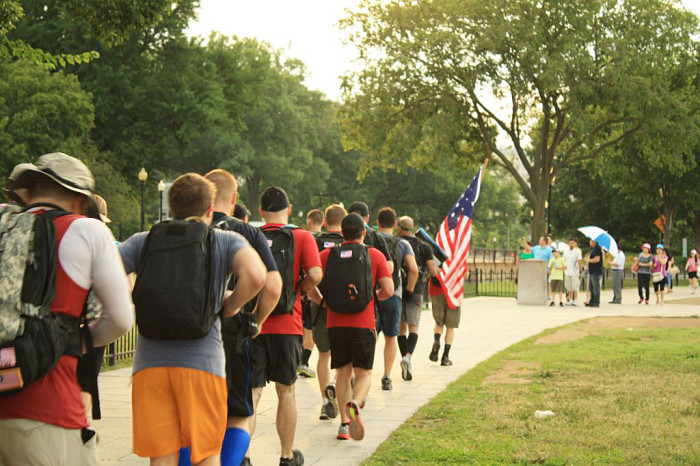The phrase “survival of the fittest” has often been associated with various facets of society, but most often when depicting the nature of humans – to not only survive but thrive – when placed in seemingly insurmountable or physically challenging situations.
We see these tendencies of natural selection at a primitive level every day; some individuals grow accustomed to a certain level of comfort or luxury in their lives and live a lifestyle that supports that level of comfort. Other individuals do what they can to constantly displace any notion of comfort and strive to obtain higher levels of physical proficiency and a mastery of their physical and mental performance.

But this isn’t meant to be a watered-down monologue on natural selection or Darwinism – what this is meant to be is a basic framework you can apply in order to reach a greater mastery of your body’s overall performance. This article will focus primarily on physical performance. Life is a constant cycle of events and stimulants that your body is required to process; your physical, mental and emotional stasis is dependent on your ability to properly prepare your body for these events and stimulants. When your body is at a level that allows you to not only survive but thrive, in this cycle of events and stimulants, you can be assured to live better.
Identify Your Motivation
The most important step in choosing to master your body’s performance is identifying your motivation. Why do you choose to get up early every morning to run two miles followed by some light calisthenics? Why are you so keen on getting to the Crossfit box after work to knock out the prescribed WOD?
Maybe you already have a baseline level of fitness that you want to maintain (something we’ll cover shortly). You want to be confident that if X or Y occurs, you will be physically capable of performing Z. This is not uncommon in the military or other professions that require defined measurements of performance on a regular basis. While there are baseline levels of fitness that service members are required to maintain or meet per regulations, many choose to exceed or supplement these standards with additional fitness regimens that provide them with additional physical capabilities. For example, while being able to score high results for both the Air Force and Army PT tests, I choose to train in a manner that ensures I’m also capable of carrying heavy weight long distances for ruck marches that simulate the physical requirements of long dismounted patrols.
Maybe there’s a specific event that you’re participating in which requires an elevated level of fitness that you wouldn’t normally maintain. This is often the case for endurance-based athletes or other professional competitors. These athletes often build up their physical capability on a strict training regimen that cannot be deviated from, lest they are unprepared for the event come race day. An example of this would be your triathletes, Ironman competitors, or potential trainees for special operations pipelines.
Critical to your training motivation is your mental attitude and mindset. It is said, “the final weapon is the brain – all else is supplemental”. This could not be more true in the context of your willingness to train consistently to a measured standard or when faced with a seemingly insurmountable challenge. It must not be overlooked that frequently, it is our willingness to train and prepare that is more foundational in achieving heightened performance levels than the training itself. Nothing great was ever achieved overnight; hence the significance of a strong will to train and the proper mindset that accompanies it. If you fail to prepare, you prepare to fail. With the proper mindset and mental attitude coupled with consistent preparation, you cannot fail.
Establish a Baseline
After identifying your motivation for pursuing enhanced or improved physical performance, you need to establish a baseline of performance that your body is capable of. Personally, I like using a variety of military physical fitness tests to establish a fitness foundation. My primary go-to fitness tests are: the Army fitness test (as it’s usually administered prior to any Army training school), the Air Force fitness test (I’m in the Air Force and the standards must be exceeded) and the Air Force special operations PAST (Physical Aptitude and Stamina Test, used by the rescue and special tactics communities. This is one of the more balanced yet highly demanding fitness tests in the US military arsenal). However, using fitness tests to establish a baseline is only one option. If you’re training for a marathon – run the marathon distance. If you’re training for a triathlon – do a dry run. The purpose is to identify what your body is currently capable of, so that you can replace that capability with improved performance through focused training.
There are countless options in the fitness community available to use when establishing a baseline and you only need to choose one that not only fits your motivation (i.e. is in keeping with your end-goal) but also is easy to perform and evaluate. Look to other resources available as well to gauge your baseline performance, to include any peers with previous experience in similar goals, your local gym or by checking online for the countless workouts or fitness plans.
Fuel Your System
The need to fuel your system and provide it with the necessary energy and rest to achieve certain physical performance levels sounds rhetorical, but is still something that is worth mentioning.
Avoiding extensive lessons in nutrition, dieting and physiological performance, you need to ensure that you are giving your body the energy it needs to perform the physical tasks you execute. Simple, right? Evidently not; to this day, this is something I constantly fail to do.
Without fail.
I may be sipping on water constantly or even increasing my electrolyte count with some Gatorade mix, but I can be guaranteed to not drink enough of it.
During a military heavy division (marathon distance ruck with 35lbs, fatigues and boots) event with a good friend in Colorado, he and I both – at separate times during the race – failed to properly consume enough water and energy, resulting in an unpleasant stint in what we refer to as the “pain cave” (a miserable location of self-pity, frustration and diminished physical performance). Such visits to the pain cave depend on more than one variable and a short mindset relapse, poor training or preparation, or lowered morale all play a role in these events; however, proper hydration and energy intake is one of your baseline necessities. The event is going to drain your body both physically and mentally regardless – but remaining well hydrated and nourished dictates the degree of drainage you experience. Know what your system needs and fuel it appropriately.
Measure Your Progress
After identifying your fitness objective(s), establishing your performance baseline and training with the proper amount of rest, energy intake and fuel, you need to measure your progress. In order to ensure you reach your performance objectives, you need some mechanism by which to measure your progress.
There are a number of methods available by which you can measure your fitness progression en route to your objective, including but not limited to: fitness trackers, re-administering fitness tests for a new baseline or signing up for endurance events themselves. Let’s say you’re preparing to run a marathon or compete in a triathlon; rather than falling back on your fundamental exercise regimens and routines, why not measure your progress with a fun yet still effective alternative? Instead of taking another dull twelve-mile out-and-back through the back roads of your town, why not sign up for a Tough Mudder or teamwork-based event instead? You cover the same twelve miles and you have much more fun doing it. Need a good full-body event that tests your endurance, strength and mental ability to think under stress? Why not do a GORUCK Challenge (of which I’m a major fan; class 198) and force your body to wear a ruck, perform countless exercise repetitions while wearing it, and be forced to work as a team with complete strangers all the while?
The purpose of measuring your progress is to establish your new baseline of performance. In doing so, you will have a better idea of how your training must be adjusted in order to meet your initial performance objectives.
Wash, Rinse, Repeat.
If you’ve made it this far in your training, you’re on the path to success. Nothing was ever gained by sitting idly by and watching the world pass. Most often in life, the good things are those that require hard work, dedication and commitment. It’s a good thing that humans are habitual in nature and enjoy routines – this is something that will undoubtedly come in handy when trying to find the inner motivation to get up for yet another early morning of training in the dead of winter, because as we all know, “If it ain’t raining, it ain’t training”.
The ultimate key to success is how strong your motivation to perform at higher levels really is. Coupled with the proper mindset and will to train, your motivation will be the difference between success and failure. For those in the military, this tends to be a very real and necessary motivation – especially when your life and your buddy’s life depend on it. For others, your fitness could be a hobby, a profession or a lifestyle that you require yourself to maintain. The purpose in pursuing these fitness objectives is to ultimately thrive in this world, by enabling your body to perform various feats that allow you to live as a better person. Thanks for listening.
The content of this article is the result of personal observations associated with military fitness requirements, various previous training objectives and personal fitness endeavors. It is by no means all-inclusive and one size does not fit all. There is no cookie-cutter approach to fitness!
GORUCK Challenge Photos © GORUCK
